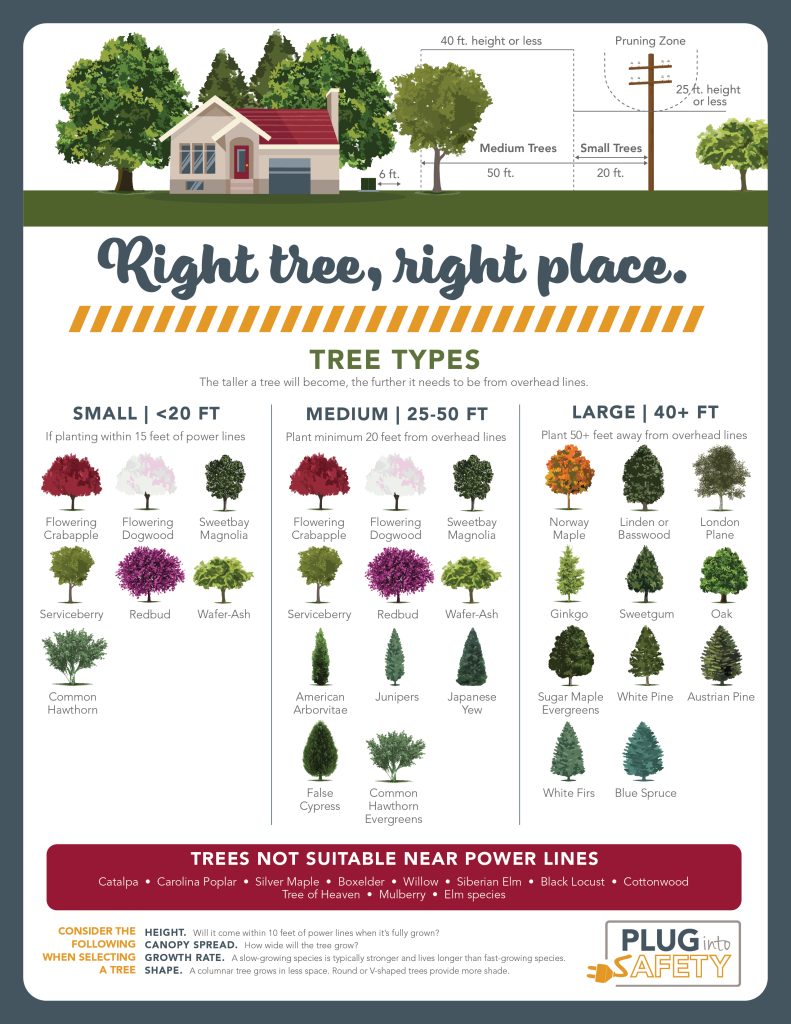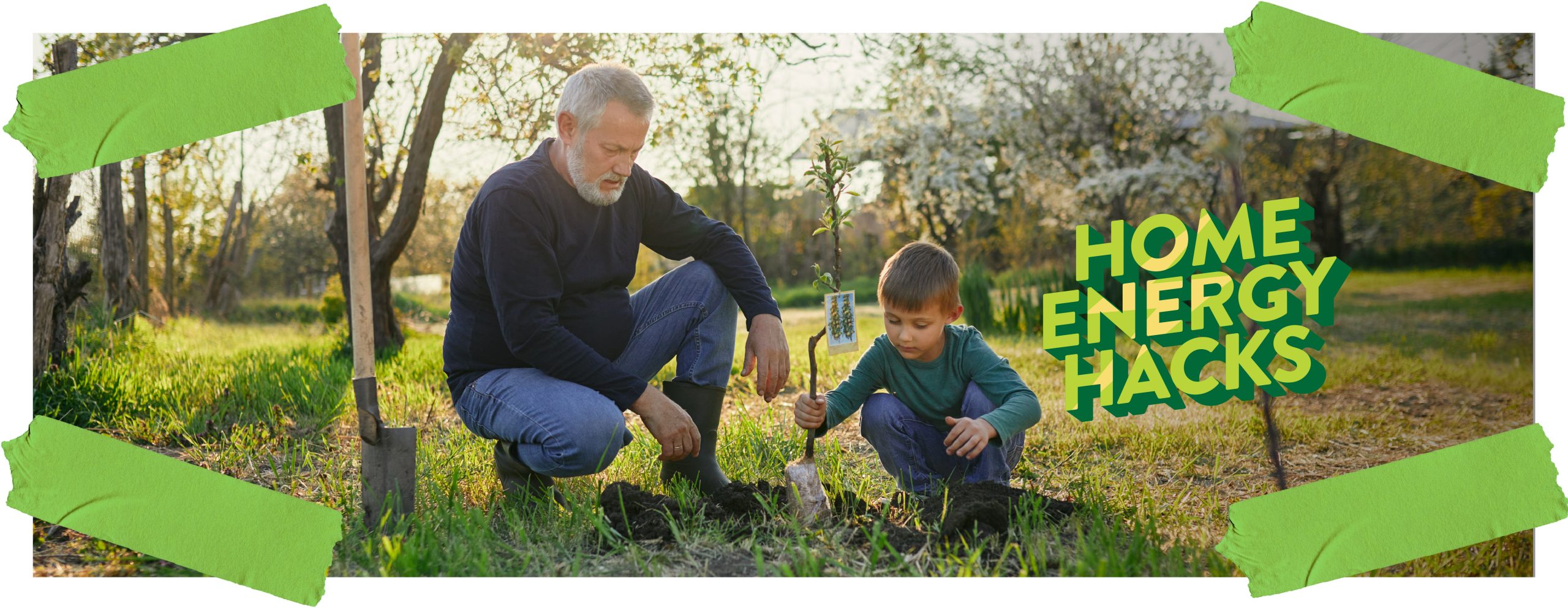Home Energy Hack: Grow Money on Trees
Together, heating and cooling make up the biggest energy expense for most homeowners—which means cutting down on HVAC use can equal big savings on your energy bill. While we usually look inside the house at things like sealing and insulation, upgrading to the latest technology, and maintaining your current equipment to save energy, there are plenty of creative ways to save outside, too. And one of them has a lot to do with our leafy, green friends. Tackle this energy-efficiency project just in time for Earth Day.
Landscaping to Lower Energy
For this month’s Home Energy Hack, we’re looking at landscaping. Specifically, where should you plant trees in order to make your home more comfortable and save money? In the summer, a properly placed tree can help shade your home, cutting down on the need for air conditioning. In the winter, a tree without leaves allows sunlight and warmth while providing a natural windbreak.
Selecting the Right Sapling
The first rule of thumb when picking a tree for a landscaping project is to choose something native to your area. And that’s not just to appease the master gardeners at the native plant society. Native trees have the best chance of surviving and thriving, because they’re already suited for the local climate. On the flipside, non-native trees can be invasive—quickly dominating the landscape where they’re planted. The Bradford pear tree and Japanese honeysuckle are frequent offenders in the Midwest, where co-ops that participate in Power Moves are located.
Other than going local, your next big decision in terms of the type of tree will be deciduous versus evergreen. As the name suggests, evergreens keep their leaves (or needles) throughout the year. This can provide for dense shade and heavier protection from the elements like wind. Deciduous trees lose their leaves each fall. These can be a great choice for trees on the south side of your home, because they’ll allow additional sunlight in the winter, adding warmth only during the months when you want it.
Spotting the Savings

Once you settle on the kind of tree you want, the next step is picking the location. That means thinking about the size of your tree once it has reached maturity. Height isn’t the only variable. You’ll also want to think about the tree’s shape, the canopy spread, and growth rate. Next, you’ll want to consider any nearby power lines or utilities. Consult this helpful graphic from our friends at IEC for reliable advice on planting near power lines. And be sure to dial 811 to contact your state’s utility locator service at least three days before you dig!
Other than the safety considerations around utilities, the next important variable is where it can help you cut down on your HVAC use. Trees planted on the south side of your home will help shade you from harsh daytime sun. Trees along the west will cut down on evening sunlight. You should also consider planting shade trees near patios, driveways, and other hard surfaces. This reduces the heat those surfaces absorb and reflect back on your house.
You don’t need to implement new technology or equipment for this month’s Home Energy Hack. Just embrace the old-fashioned green provided by a healthy tree, and use nature to your advantage for this energy-efficiency hack that’s perfect for Earth Day. You might find out money grows on the right tree planted in the right place. For even more ideas on where to save at home, ask your co-op if they provide a home energy assessment.
